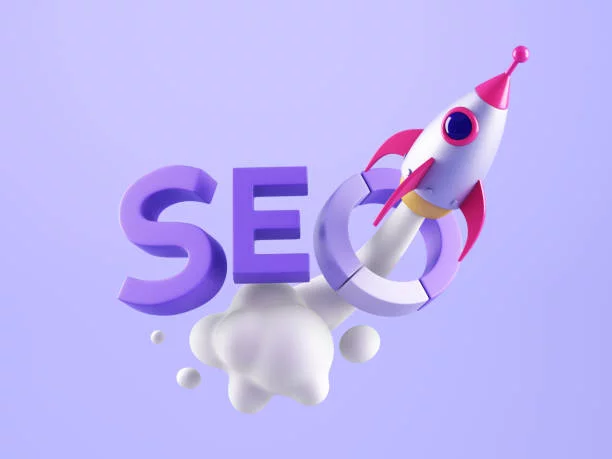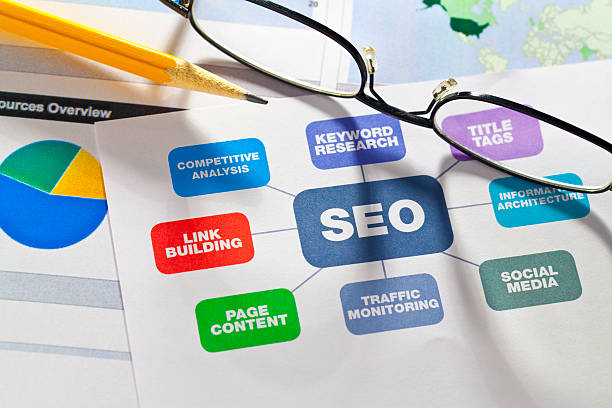
I can bet that almost all internet users must have heard or read the term SEO somewhere online. If you are one of those internet users and you have no idea what this term means then do not worry, because we got your back. SEO is an acronym for “search engine optimization”. It refers to the set of practices that are incorporated to enhance the organic ranking on SERP (search engine result position). It means that through it you can improve the working of your website in a way that when people search for related products or services they come across your website or webpage on results of search engines including Google, Bing, and others. A higher ranking on search engines helps you to captivate the attention of both prospects and existing customers to your website.
In simple language, it is the process to optimize search engines such that they prioritize your website while customers search for products and services you are dealing with.
You must be wondering how does SEO work and how will you make sure to ride up the ladder of search engine results? Well, in this article we will answer all queries that pop up in your head.
Before sharing the way to incorporate SEO to boost your website, we would like to shed light on the target audience of search engine optimization. it works to enhance the website’s reach to organic customers or viewers. Organic customers are those customers who can view your non-advertised website at the top of the list when searched on search engines. In simpler words, the search engines show the paid or advertised websites on top of search results and afterward the unpaid ones. SEO targets to climb the up the ladder of unpaid websites this is why the customers it attracts are referred to as organic users or viewers.

SEO is a comprehensive set of rules and guidelines to enhance the ranking of your website on search results. You must be thinking about why it is so essential to reach the top ranking on SERPs? Well, the answer lies in the famous saying that if your website doesn’t appear on the first page of Google then it may as well is invisible to the users or customers.
Now, let’s focus on the two basic goals of SEO. Well, the first goal of SEO is to assist you in understating what the users are looking for. This will enable you to create user-specific high-quality content to attract and satisfy users. You need to focus on user search intent. The content you create and share must dictate the user search intent. Because the content does not depict what users are looking for then it won’t help you to lure them toward your website. The second goal of SEO is to aid in creating a website that search engines can locate, index, and show to users upon searching.
You must be wondering how you will know about user search intent. Well, many software and programs help you locate the most searched ‘keywords’ related to your product or service category. By incorporating those highly searched keywords in your content you can rank up in search engine results and reach your intended audience. The use of these keywords helps the search engines to locate your web pages, blogs, articles, etc, and make sure that the audience sees them as well.
The essentials tasks of SEO include
- identifying user search intent related to the products or services you are offering
- devising a user attractive content to lure them towards your website
- devising a website that is detected by the algorithms and crawlers of search engines
To better understand the working of it we need to break it into three types to deeply grab the concept. The three types include technical SEO, on-page SEO, and off-page SEO.

Technical SEO
Technical SEO, as the name suggests, is related to handling all the technical backgrounds of your website. It enables you to develop a suitable configuration of your website that is easy and comfortable detected by search engine crawlers. If you fail to develop technicalities that are crawler and index friendly then you won’t ever be able to get ranking on search engines let alone top the chart to reach customers.
Even if you get the best technical configuration for your website still it doesn’t mean that your technical SEO effort is done. You need to continuously upgrade your technical configurations as the indexing algorithm of search engines keeps on changing and upgrading from time to time. So, you are also required to upgrade your technical SEO to match the requirements of search engine indexing.
On-page
The second type of SEO is on-page SEO. As the name suggests, the on-page SEO deals with the content and other components posted on the webpage. The primary focus of on-page SEO is to ensure that your content has enough data to be detected by the crawlers and index algorithms of search engines. As search engines do not have time to read your entire content so they work on some sort of signal from you.
This is where you deal with the most hyped aspect of SEO ‘keywords’, title or heading, image SEO, internal links, website content structure, and other tactics to send out the right ‘signals’ to the search engine crawlers and algorithms.
The right usage of on-page SEO will enable you to not only improve the content of your website but all enhance its credibility and accessibility to search engines.

Off-page SEO
Off-page SEO means that your blog, post, article, or content in any other form is supported by a credible and reputable website. The “signals” from a trusted and worthy website are more likely to get top rank in search engine results positions.
Off-page SEO is an indirect yet important way to channel your content through websites that have a more trusted layout. It’s like someone is giving a very strong reference in favor of your content to search engines.